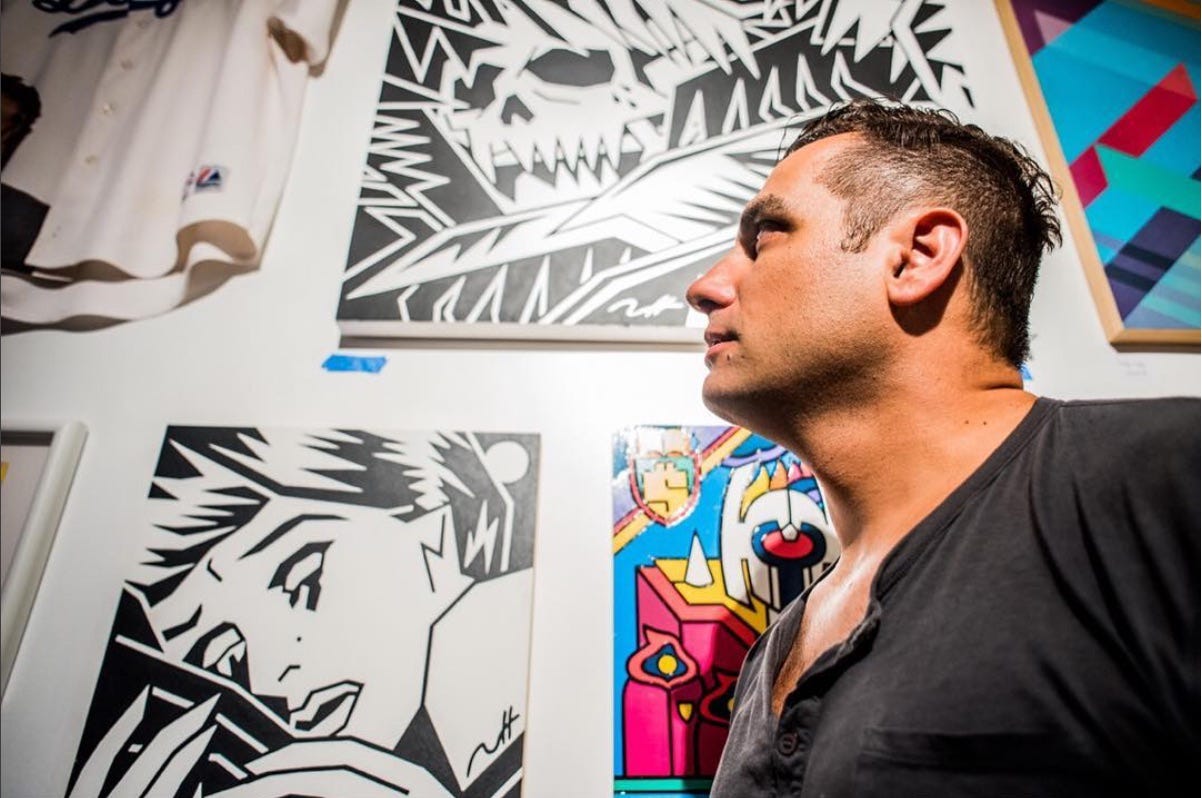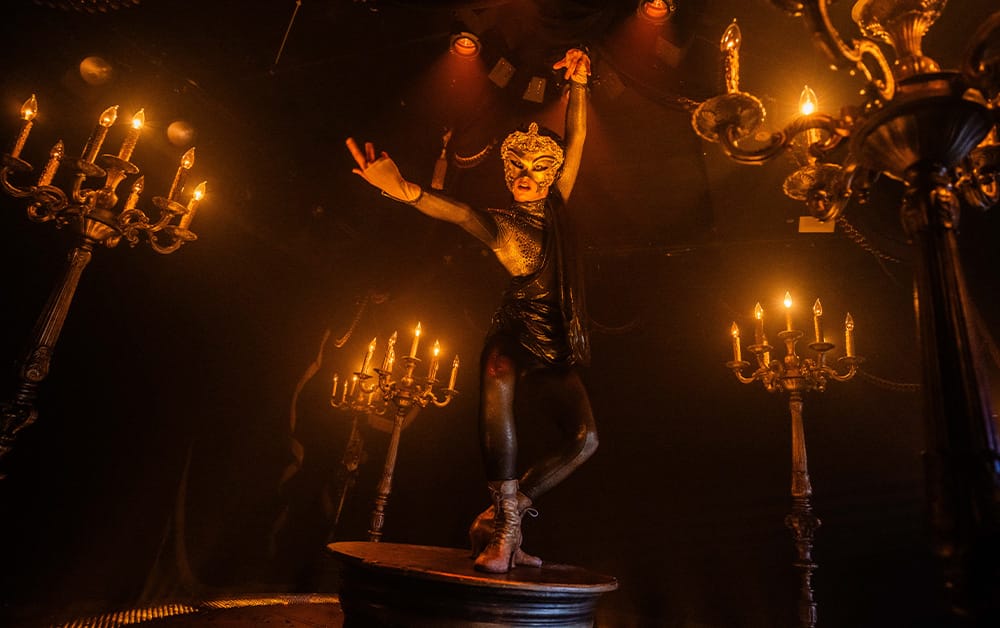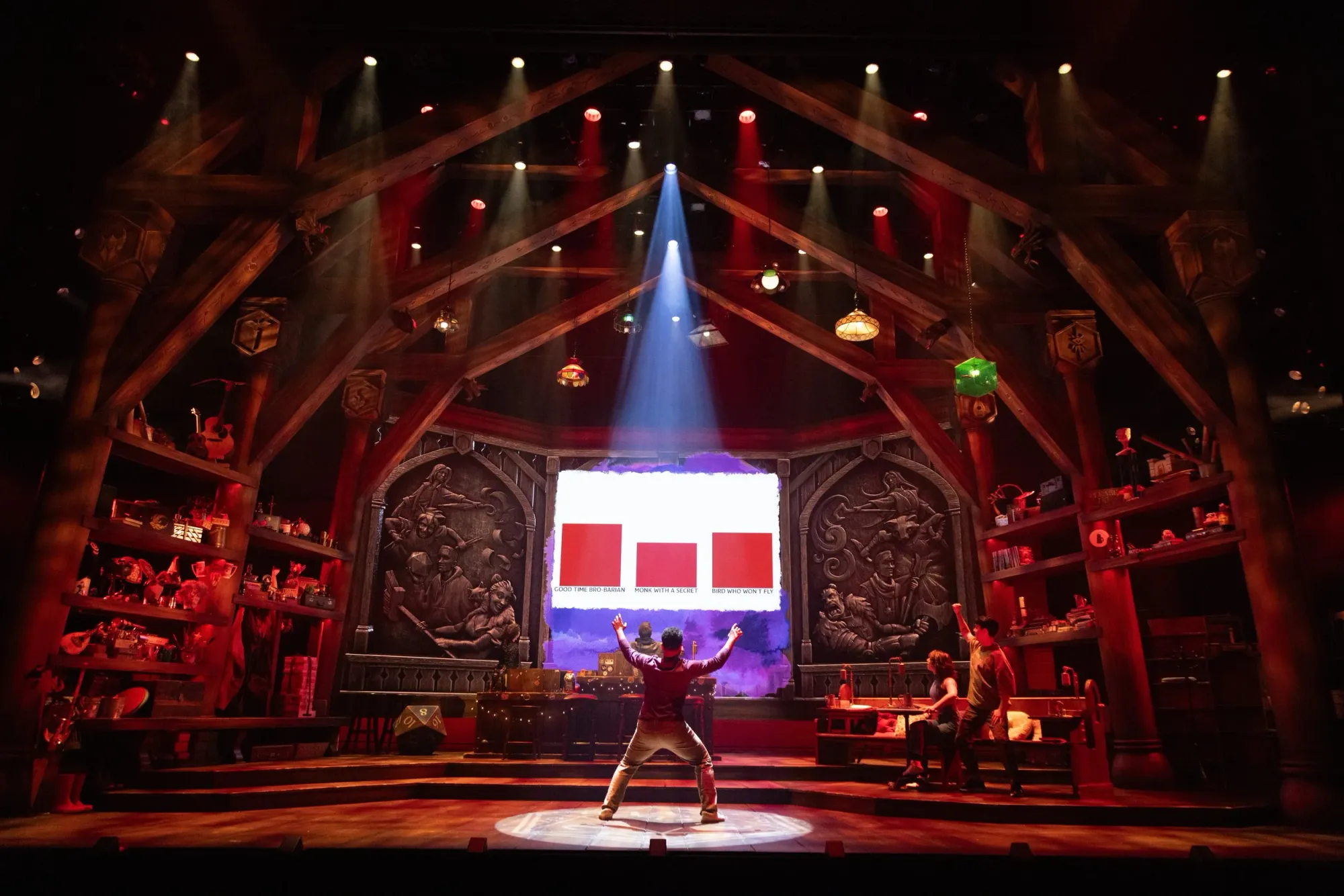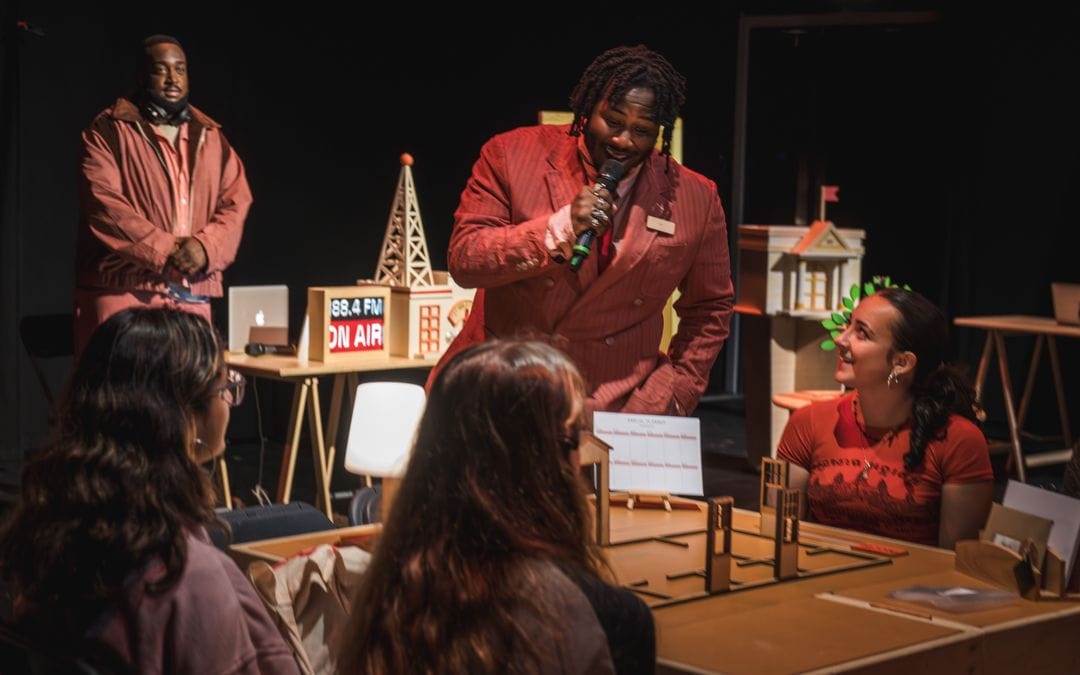
Long time readers might recall how we started our last review of an Annie Lesser work, just two weeks ago:
ABC Project auteur Annie Lesser is a woman who spreads herself thin. At times, too thin.
The context there was the content of D(istillery) the fourth part of her planned 26 piece cycle of experimental theatre work. The following week saw the opening of a triptych of pieces E(levator), Students, & Friends, which was staged at the Think Tank Gallery/939 Studios space in Downtown LA.
Ambitious in its own right as a whole project, the three plays were arranged to form a Venn Diagram: characters and participants from the different plays set upon tracks that were designed to intersect each other at the edges. Lesser often finds inspiration in structure — her Infinitely Dinner Society project riffs on mathematical concepts — with the rigidness of intellectual limitations providing a form for her lyrical impulses to play off of.
But where D(istillery) — which was pulled together quickly when an idea for a different letter of the alphabet fell through — was an honest and raw meditation on being pulled apart in many directions, the E(levator) cycle feels like the downside of a rushed process.
Before getting into that let’s note a few limitations of our own view and get into what works.
First off, the short run of the project and limited number of slots for E(levator) itself meant that I never saw that slice of the diagram. The encounters I’ve had with those who have seen E(levator) indicates that it is enjoyable, with the two participants cast as new orderlies at the mental institution where all of the action takes place in and around.
My viewing of Friends was limited to a test audience, the night before first preview. It is not possible to give anything resembling a review of the show, but even in a rough and early form the piece proved to have a clever conceit; both the audience and one of the actors (Keight Leighn) were cast as the voices inside the head of a young man (Mikie Beatty) about to check himself into the institution. Even with the cast not yet fully off book (it was a rehearsal, that’s not a knock, that’s par for the course) the charisma of Beatty and Leighn proved to be perfect vehicles for Lesser’s scenarios and prose.
Get Noah J Nelson’s stories in your inbox
Join Medium for free to get updates from this writer.
SubscribeSubscribe
Friends didn’t however, have a clear end point. We were encouraged to dismiss that on test night because of limitations with the space that evening. However, after checking in with multiple people who saw the official show, that problem appeared to have persisted. There is a temptation in immersive productions to leave the audience questioning where the fantasy ends and reality begins, but that doesn’t really absolve creators from closing the circle on a show. The lingering sense of having encountered something more than normal reality — which Lesser has captured on numerous occasions before — is more readily accessible when the audience is given clear permission to leave.
The third, and from an audience size standpoint largest, show in the cycle was Students.
In this scenario the audience was cast as students angling to get extra credit in a psychology class by attending an art show put on by patients of the asylum. It’s a conceit two doors down from Marat/Sade, but functioning here with a less of a script than an sketch.
On the upside, Lesser called the banners of her actor collaborators and summoned up a stellar cast. Dasha Kittredge played the instructor while the ranks of the asylum residents were played by the likes of immersive vets like Terence Leclere and backed up with the comic chops of comedian Ed Salazar. Thaddeus Shafer (New Coast Power), who was the main actor in E(levator), popped up with a cameo in Students. Taken in full the company working these pieces are exactly who you want running around in an immersive sandbox.
Students however, lacked enough material or simmering time to really live up to the potential of that cast. The instructions given to the audience to identify the proper diagnosis for each of the patient/artists wasn’t really enough to hang an self-motivated exploration off of, and at the same time bordered on the flip. As someone whose close family has multiple people with serious mental illnesses — people who have been institutionalized for stretches of time — I’ve got a high bar for how the material is handled. While Friends had enough to clear the bar even in a rough form, Students asked for more leeway than the visible writing effort earned.
The material wasn’t played for laughs, thank the maker, but it also didn’t feel like the cast was given enough to work with. Given who that cast was, it’s a double shame. A rare swing and a miss for Lesser, one that can probably be hung on the fact that it was one of four plays she was producing and developing simultaneously.
(This is the part where you go back to the top of the article, to the line about being stretched too thin.)
The triple bill also caused some confusion amongst patrons. Both during and after the run more than one person expressed that they weren’t really clear on whether the cycle was one show or three. If they all needed to be seen in order to be understood. I confess that when I first opened the email announcing the production I was a bit perplexed by just what was being proposed: and I had already been told by Lesser what she had planned.
When the sum total of tickets for all three shows was upwards of $140, the confusion on just what you should or shouldn’t see becomes an extra layer of “huh.” We’ve talked plenty of times about pricing the work at a rate that generates a decent — if not actually living — wage for performers and creators. In order to keep that going, the value has to be clear cut to the patrons.
There’s a temptation across the Southern California immersive scene right now to answer the demand for new immersive work as quickly as possible. That’s a call that needs to be measured against what the work itself wants to be. The truth is that people will wait — years if need be — for good work from the likes of Annie Lesser, The Speakeasy Society, The Wilderness and more. And when it finally does, they will thank those creators for taking the time to get it right.
E(levator), Students, & Friends played at the Think Tank Gallery as part of the Drinkin’, Smokin’, & West Coastin’ slate of events. The next letter in the ABC Project is F.
Join the fastest growing immersive arts & entertainment community on the planet: EVERYTHING IMMERSIVE.



















Discussion